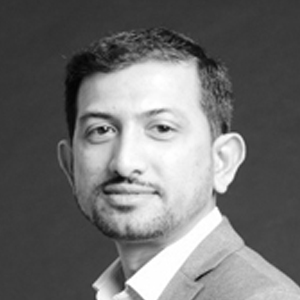- Technology
- SEE MORE
- classical
- general
- talk
- News
- Family
- Bürgerfunk
- pop
- Islam
- soul
- jazz
- Comedy
- humor
- wissenschaft
- opera
- baroque
- gesellschaft
- theater
- Local
- alternative
- electro
- rock
- rap
- lifestyle
- Music
- como
- RNE
- ballads
- greek
- Buddhism
- deportes
- christian
- piano
- djs
- Dance
- dutch
- flamenco
- social
- hope
- christian rock
- academia
- afrique
- Business
- musique
- ελληνική-μουσική
- religion
- World radio
- Zarzuela
- travel
- World
- NFL
- media
- Art
- public
- Sports
- Gospel
- st.
- baptist
- Leisure
- Kids & Family
- musical
- club
- Culture
- Health & Fitness
- True Crime
- Fiction
- children
- Society & Culture
- TV & Film
- gold
- kunst
- música
- gay
- Natural
- a
- francais
- bach
- economics
- kultur
- evangelical
- tech
- Opinion
- Government
- gaming
- College
- technik
- History
- Jesus
- Health
- movies
- radio
- services
- Church
- podcast
- Education
- international
- Transportation
- Other
- kids
- podcasts
- philadelphia
- Noticias
- love
- sport
- Salud
- film
- and
- 4chan
- Disco
- Stories
- fashion
- Arts
- interviews
- hardstyle
- entertainment
- humour
- medieval
- literature
- alma
- Cultura
- video
- TV
- Science
- en
Prepping for Virtual Surgery, with 8Chilis Aravind Upadhyaya

Of all the jobs that are difficult to train for, surgery is especially challenging, what with needing a body and all. But our guest Aravind Upadhyaya is working to make surgical training virtual, with the help of XR technologies.\n\n\n\n\n\n\n\nAlan: Hey, everyone, Alan Smithson, host of the XR for Business podcast. Today, we're speaking with Aravind Upadhyaya, co-founder and CEO of 8chili, an Oakland, California based startup, bringing the dream of telesurgery to the real world. Today, we're going to talk about how virtual reality is improving the outlook for remote surgeries globally. All that and more, coming up next on the XR for Business podcast.\n\n\n\nI want to welcome Aravind, thank you so much for joining me on the call.\n\n\n\nAravind: Thanks, Alan. It's a real pleasure to be on your podcast, and to get to know you, as well.\n\n\n\nAlan: It's such an honor. You guys are working on something that is a true game changer for surgeries and remote telemedicine. Maybe just tell us what you're doing and the problem you're solving.\n\n\n\nAravind: Definitely. So, just to do a quick intro: I'm a technologist, so I'm an electronics engineer. I've spent the last two decades leading R&D projects in mixed reality, computer vision, Internet of Things, and robotics at one of the biggest, largest conglomerates, the Tata Group. And in 2016, I had my Tony Stark moment when I had the Hololens. It kind of felt like I could hold the power of x-rays in my eyes. And that's when the journey started for 8chili. So we've been working on this technology with surgeons for the last two years, kind of in stealth mode. And this year, GPM, we finally kicked it off. In a nutshell, we wanted to reimagine surgeries with mixed reality, by building a remote collaboration platform. I want to start with this: 60 percent of new residents universally are not confident to perform core procedures. And just about 3 percent of the surgeons globally have access to high quality continuous training. And why is that? And that's because we have a very legacy training system. So, there's a great adage that goes like, "I hear and I forget. I see. And I remember. I do and I understand." And that's why we are building NAVIX AIR, because experience cannot be explained. So you have to experience to really get to be an expert. And NAVIX AIR allows residents to experience what a surgeon does in a surgery. So this, what we want to do, is take the platform to a very immersive collaborative experience. Now, NAVIX AIR is a platform that allows residents to transform into the surgeons eyes and follow their steps simultaneously in the virtual world, without disturbing the surgeon. So let's say you can fail and repeat as many times as you want, even post the live surgery. And the big difference is being able to see what the surgeon sees brings this feel of reality into the residence. And that's what is missing in the cadavers or the existing VR simulators. Because what happens is no surgery goes smoothly or perfectly. There are complications, there are surprises that happen, like another surgeons encounter. And these cannot be captured. So it's the surgeons experience that come into play when something is not going as they expect it to go. And this feel of how to react in such a situation-- let's say, what does a surgeon do? What is the communication that they used to talk to the nurse, the anesthesiologist, or the other juniors who are helping the surgeon? Or what kind of technique? Like, if there is a bleed which was unexpected, how do they go about tackling that? So all these things are scenarios that will be happening in the real world. So there's no substitute for it.\n\n\n\nAlan: That makes a lot of sense. So when a surgeon is operating, when these things pop up, it's almost impossible to train for every scenario, but you can record it.\n\n\n\nAravi